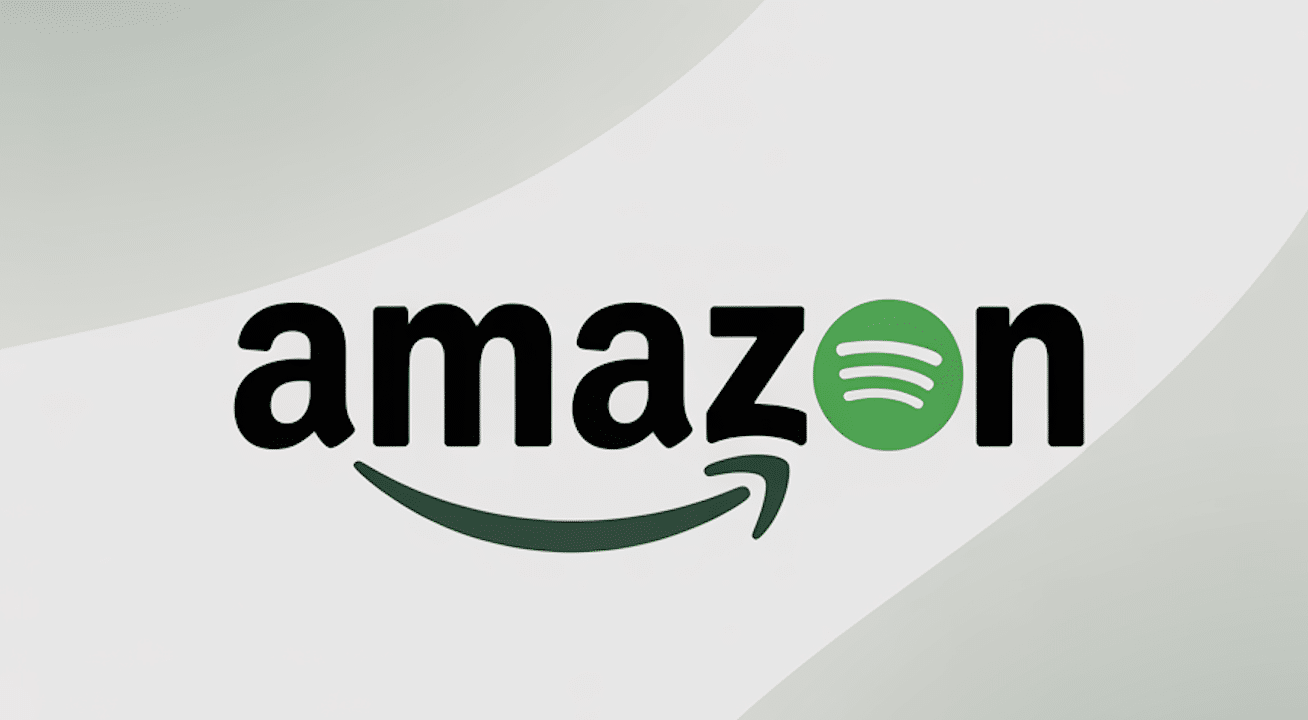How to Get Started with Amazon Sponsored Display PPC Ads – 2025 Guide
Here’s how to take advantage of Amazon’s closely guarded first-party data to put your product (and brand) in the spotlight.
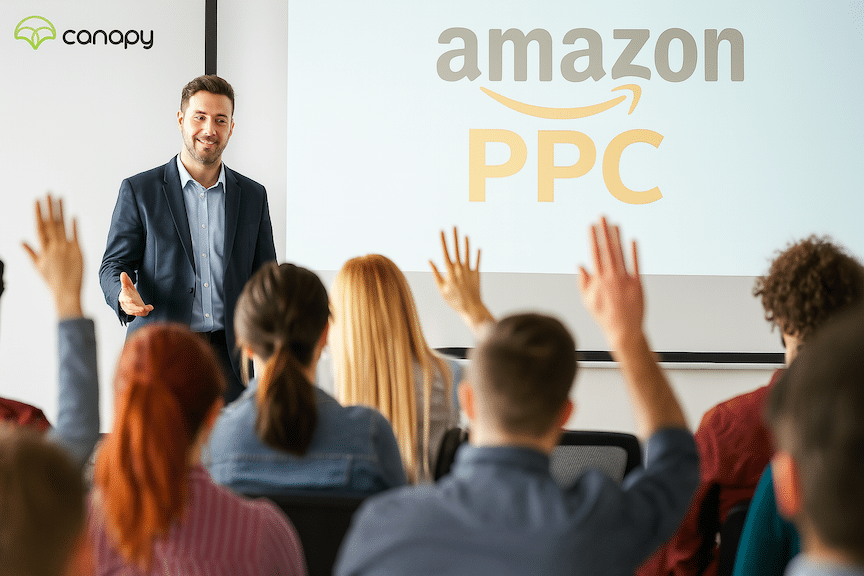
Table of Contents
- The Evolution of Amazon Display Advertising in 2025
- What Amazon Sponsored Display Does Differently
- Why Sponsored Display Ads Are a Powerful Marketing Tool
- Major 2025 Updates and Features
- Who Can Use Sponsored Display Ads
- Getting Started With Amazon Sponsored Display Ads
- Understanding Targeting Options
- Contextual Targeting (Product Targeting)
- Audience Targeting Strategies
- AI-Powered Optimization Features
- Campaign Types and Bidding Strategies
- Where Sponsored Display Ads Appear
- Advanced Strategies for 2025
- Amazon DSP: The Next Level
- How Canopy Management Can Help
- Frequently Asked Questions
The Evolution of Amazon Display Advertising in 2025
The platform continues expanding rapidly: Amazon hosts 9.7 million sellers worldwide (though only 1.9 million are actively selling), with hundreds of new sellers joining daily. This creates both opportunity and competition.
That’s why a well-built Amazon PPC ad has become the best way to set yourself apart and make sure your product is seen. One big way to do that is to take advantage of Amazon’s closely guarded first-party data and use audience targeting with your Amazon ad to keep your product (and brand) in the front of your prospective customers’ minds.
2025 Reality: Sponsored Display has evolved from a simple retargeting tool to a sophisticated, AI-powered advertising platform that reaches customers across Amazon’s ecosystem and beyond.
Experienced Amazon sellers know how effective it is to use Sponsored Product and Sponsored Brand ads to ensure that your Amazon product shows up prominently in search results. They’re also a great way to establish brand recognition. But they can have their limitations – particularly when shoppers leave the product page on Amazon.
Important Note: If you’re just getting started selling on Amazon, consider reviewing our guides on Sponsored Products and Sponsored Brands before diving into this more advanced advertising option.
What Amazon Sponsored Display Does Differently
Yes, it occasionally feels uncomfortable to be “followed” across platforms. Still, that kind of pusuit from advertisers often results in a shopper purchasing something that they otherwise wouldn’t have considered.
One big difference between Sponsored Display ads and the rest of Amazon’s advertising models is that the program doesn’t only target keywords. A Display ad primarily targets shoppers based on their interests and behavior patterns.
While a customer is shopping, Amazon’s sophisticated data systems are collecting information on their behavior and habits. Later, the Sponsored Display ad shows similar results (ads) to the same customer across various Amazon pages, competitor listings, as well as third-party websites and apps.
Key Differentiators in 2025:
- Behavioral Targeting: Uses shopping signals rather than just keywords
- Cross-Platform Reach: Follows customers on and off Amazon
- AI Optimization: Machine learning automatically optimizes for best performance
- Retail Awareness: Only shows ads when products are in stock and eligible
Amazon Sponsored Display ads require higher levels of eCommerce know-how compared to basic PPC campaigns. The advanced targeting and optimization features make them particularly powerful for experienced sellers.
If you’re just getting started selling on Amazon, it might be a good idea to take a look at the first PPC Quick Start Guide, featuring Sponsored Products, or second, on Sponsored Brands before diving into this guide. Both of those previous PPC Quick Start Guides include an intro on PPC basics as well as a section on PPC vocabulary.
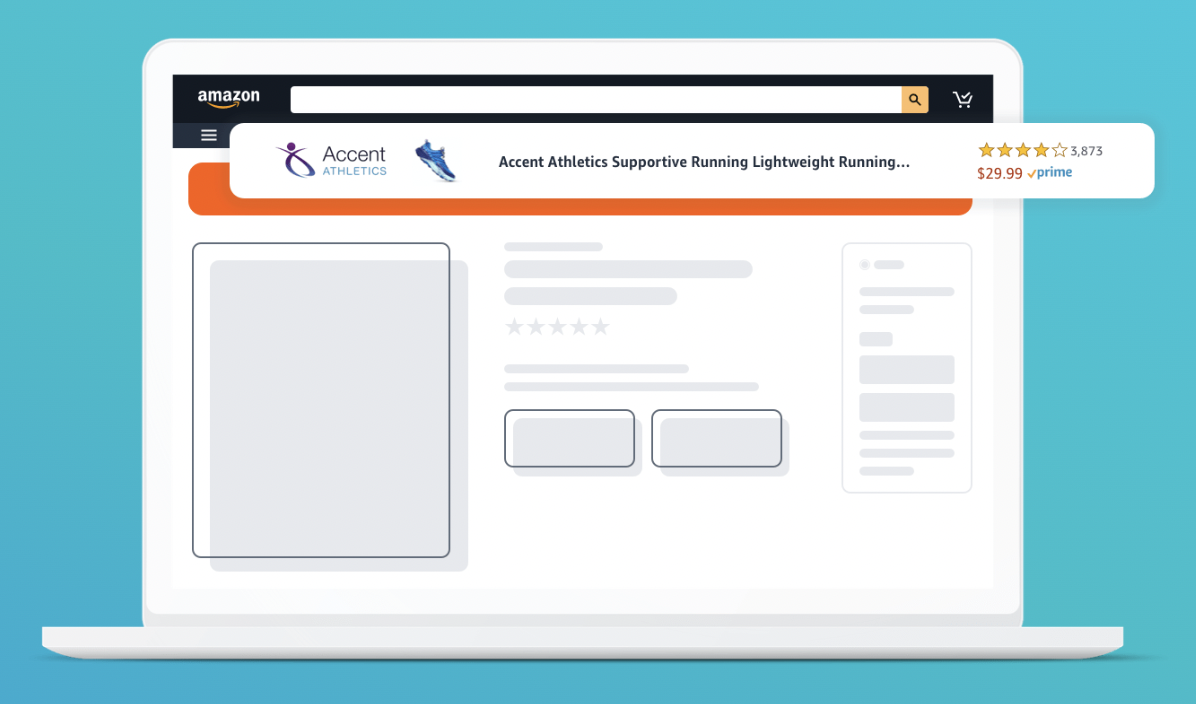
Why Sponsored Display Ads Are a Powerful Marketing Tool
Enhanced Visibility and Reach
Amazon Sponsored Display Ads give your products significant visibility boost both on and off the Amazon platform. These ads can appear in various key locations such as product detail pages, customer reviews, shopping results, and across thousands of third-party websites and apps. This wider reach enables you to connect with potential customers throughout their shopping journey, increasing brand exposure and awareness.
Highly Targeted Audience Engagement
Sponsored Display Ads leverage Amazon’s wealth of shopping and contextual data to help you reach highly relevant audiences. Unlike keyword-based ads, these ads focus on customers’ shopping habits, interests, and demographics. You can retarget customers who have viewed your listings in the last 30 days or reach shoppers exploring similar products and categories. This precise targeting enhances ad effectiveness, leading to higher conversion rates.
Sustained Sales Impact and Campaign Synergy
Sponsored Display Ads not only generate immediate sales but also have long-lasting benefits, with the potential to drive sustained customer engagement over time. When combined with other Amazon ad formats, such as Sponsored Products and Sponsored Brands, the synergistic effect can significantly boost overall advertising performance, making these ads even more effective when used as part of a comprehensive strategy.
Competitive Opportunity
Market Research Insight: Industry data suggests that a significant portion of Amazon sellers have not yet adopted Sponsored Display advertising, creating potential opportunities for early adopters. This lower adoption rate compared to Sponsored Products may result in:
- Reduced competition for certain ad placements
- Potentially lower costs in some categories
- Opportunities to establish brand presence before widespread adoption
However, competition levels vary significantly by product category and marketplace, so results depend on your specific niche and execution strategy.

Major 2025 Updates and Features
AI-Powered Creative Generation
New in 2025: Sponsored Display advertisers can now access AI-generated images within the Ads Console, putting creative innovation directly into advertisers’ hands without requiring external design resources.
Advanced Custom Audiences
Amazon has introduced “Custom Audiences” functionality that allows advertisers to create tailored audience segments using Amazon Marketing Cloud (AMC) data. This enables:
- Precision targeting based on 5 years of purchase history
- Enhanced new-to-brand customer identification
- Sophisticated retargeting capabilities
- Cross-platform audience insights
Enhanced Video Capabilities
- Contextual Video Targeting: Video creatives now support contextual targeting for better product showcasing
- Mobile Carousel Ads: Show multiple products in a single mobile-optimized ad unit
- Auto-playing Video: Muted by default with unmute controls, optimized for various placements
Cost Control Features
Similar to Sponsored Brands, Sponsored Display now offers AI-powered cost controls that:
- Automatically adjust bids to meet target costs
- Optimize campaigns over 7-day rolling averages
- Eliminate need for manual bid calculations
- Focus spending on highest-converting opportunities
Expanded Marketplace Availability
Sponsored Display is now available across all major Amazon marketplaces, including recent expansions to Ireland, and enhanced support in Japan, India, and Australia.
Who Can Use Sponsored Display Ads
Availability Requirements:
- Brand Registry Enrolled Sellers (primary requirement)
- Vendors
- Book Vendors
- Agencies with qualifying clients
- Amazon Business Sellers (new targeting options in 2025)
Important: Amazon Brand Registry enrollment is mandatory for most Sponsored Display features, making this a premium advertising tool that’s not accessible to all sellers. This exclusivity ensures that brands leveraging Sponsored Display gain an edge in brand positioning and customer engagement.
2025 Enhancement: New Business-to-Business targeting options allow advertisers to exclusively target Amazon Business customers, opening new opportunities for B2B sellers.
Getting Started With Amazon Sponsored Display Ads
To create your first Sponsored Display campaign:
Step 1: Campaign Setup
- Sign in to your Amazon Advertising Console
- Click “Create Campaign” from the Campaign Manager
- Select “Sponsored Display” as your ad type
- Choose your campaign name and duration
Step 2: Campaign Goal Selection
Choose from optimization strategies:
- Page Visits: Drive traffic to your product pages
- Conversions: Focus on sales generation
- Reach: Maximize brand exposure (vCPM campaigns)
Step 3: Targeting Strategy
Select your primary targeting approach:
- Contextual Targeting: Target specific products, categories, or brands
- Audience Targeting: Target based on shopping behavior and interests
- Custom Audiences: Use AMC data for precision targeting
Step 4: Creative and Budget Setup
- Upload your creative assets (images or videos)
- Set your daily budget and bidding strategy
- Configure cost controls (optional but recommended)
- Review and launch your campaign
Pro Tip: Start with a modest budget and let Amazon’s AI optimization learn your audience preferences before scaling up.

Understanding Targeting Options
There are two main targeting approaches available with Amazon Sponsored Display ads: Contextual Targeting and Audience Targeting. You don’t have to pick one or the other – both help you reach relevant audiences and can be used together strategically.
Strategic Combination Approach
- Contextual Targeting: Generate detail page traffic and brand awareness
- Audience Targeting: Re-engage audiences to secure missed sales opportunities
- Custom Audiences: Leverage advanced AMC insights for precision campaigns
This multi-pronged approach allows you to capture customers at different stages of their buying journey and maximize your advertising impact.
Contextual Targeting (Product Targeting)
Formerly known as Product Targeting
Amazon Sponsored Display Contextual advertising allows you to reach users actively browsing products similar to yours based on predefined characteristics. These characteristics include:
- Category: Target entire product categories
- Price Range: Focus on specific price points
- Brand: Target competitor or complementary brands
- Star Rating: Target highly-rated products
- Prime Eligibility: Focus on Prime-eligible products
How Contextual Targeting Works
Your ads appear on detail pages, shopping results pages, and customer review sections for products that match your targeting criteria. This placement strategy puts your products directly in front of customers who are actively considering similar items.
Optimization Strategies
- Cross-selling: Target complementary products to expand market reach
- Competitive Positioning: Target direct competitors to capture market share
- Category Expansion: Target broader categories to discover new customer segments
- Self-Targeting: Cross-sell on your own detail pages to increase customer lifetime value
Premium Placement Advantage: Unlike Sponsored Products that appear at the bottom of competitor listings, Sponsored Display ads appear in ultra-premium locations – above the fold, beneath bullet points, or underneath the Buy Box.
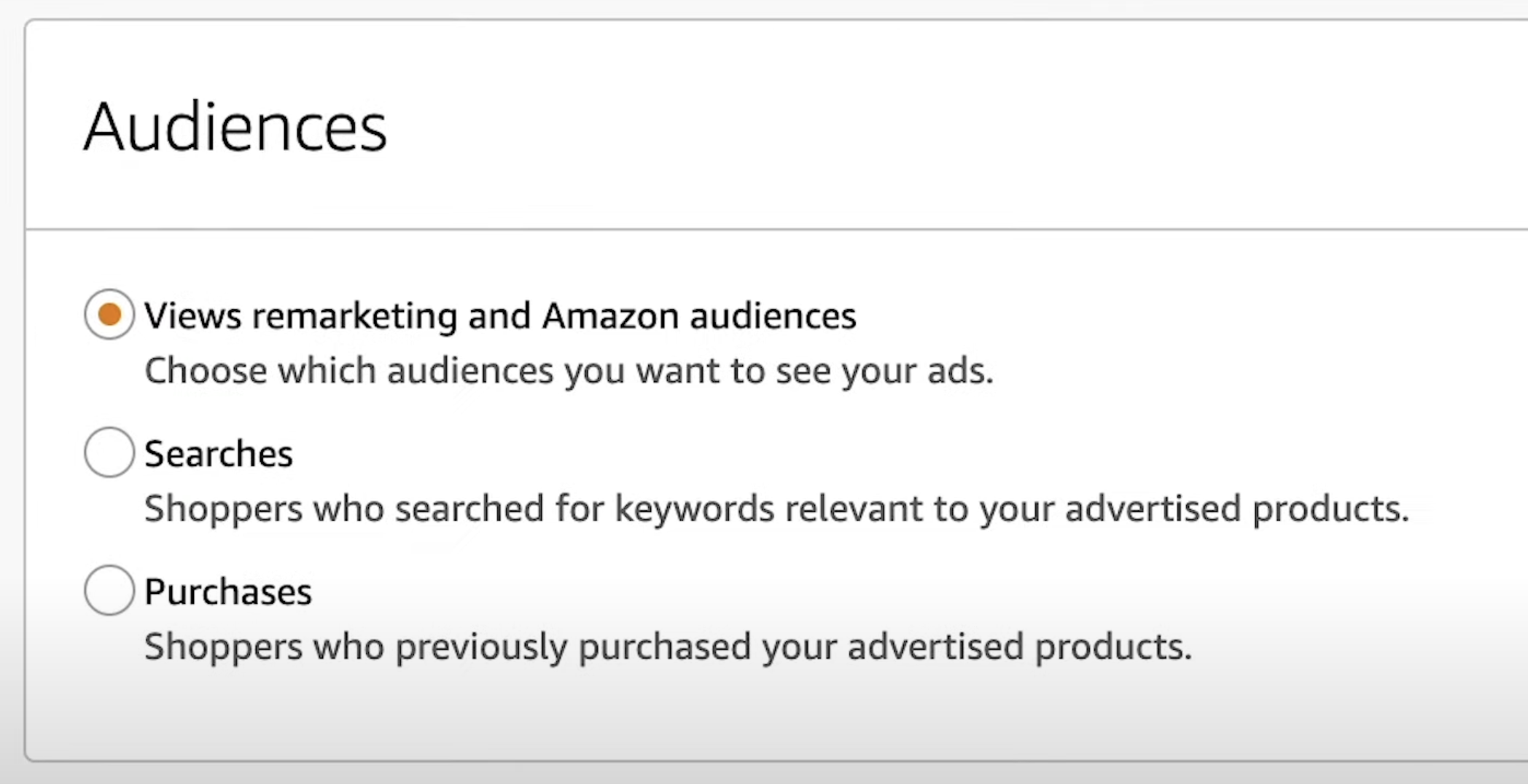
Audience Targeting Strategies
Sponsored Display audiences use Amazon shopping signals to help advertisers engage shoppers across the purchase journey—both on and off Amazon. You can build campaigns targeting different audience types:
Core Audience Types
1. In-Market Audiences These are shoppers who are actively researching in your category. You can reach audiences in the same category as your advertised products to drive consideration, or explore entirely new segments to drive product awareness.
2. Lifestyle Audiences Built from aggregated shopping and viewing behaviors across Amazon’s ecosystem, including:
- Shopping patterns on Amazon
- Browsing behavior on IMDb
- Streaming preferences on Prime Video
- Gaming interests on Twitch
3. Interest-Based Audiences Target prospective customers based on what they frequently browse and buy, driving awareness with shoppers who have demonstrated relevant interests.
4. Life Events Audiences Target customers during important life moments such as:
- Travel and vacation planning
- Marriage and relationship milestones
- Home ownership and moving
- New parent and family changes
- Career transitions and education
Custom Remarketing Options
- Views Remarketing: Target customers who viewed your product pages in the last 30 days
- Search Remarketing: Reach customers who searched for your products or categories
- Purchase Remarketing: Re-engage previous customers with complementary products or reorders
- Lookalike Audiences: Find new customers similar to your best existing customers
AI-Powered Optimization Features
Automated Creative Optimization
- AI-Generated Images: Create professional product images using AI within the Ads Console
- Dynamic Creative Testing: Automatically test different creative variations
- Performance-Based Selection: AI selects highest-performing creatives for each audience
Smart Bidding and Budget Management
- Machine Learning Optimization: Amazon’s systems can adjust bids based on performance data and conversion likelihood patterns
- Portfolio Budget Sharing: Some campaign management tools offer automated budget reallocation across campaigns
- Cost Control Integration: Advanced targeting systems allow you to set target costs and optimize toward those goals
Important Note: While AI tools are increasingly sophisticated, they require strategic oversight and don’t replace the need for campaign monitoring and optimization.
Enhanced Audience Intelligence
- Behavioral Pattern Recognition: AI identifies high-value audience segments
- Cross-Platform Insights: Leverage data from Amazon’s entire ecosystem
- Predictive Targeting: Anticipate customer needs based on shopping patterns
Campaign Types and Bidding Strategies
CPC (Cost-Per-Click) Campaigns
Best for: Direct response and sales generation
- Pay only when customers click on your ads
- Optimize for conversions and immediate sales
- Track clear ROI metrics
vCPM (Viewable Cost Per Mille) Campaigns
Best for: Brand awareness and reach
- Pay for viewable impressions (1,000 impressions)
- Optimize for maximum brand exposure
- Build awareness among target audiences
Important Note: vCPM campaigns may attribute sales to impressions even when customers would have found your product organically, so careful analysis of incremental impact is important.
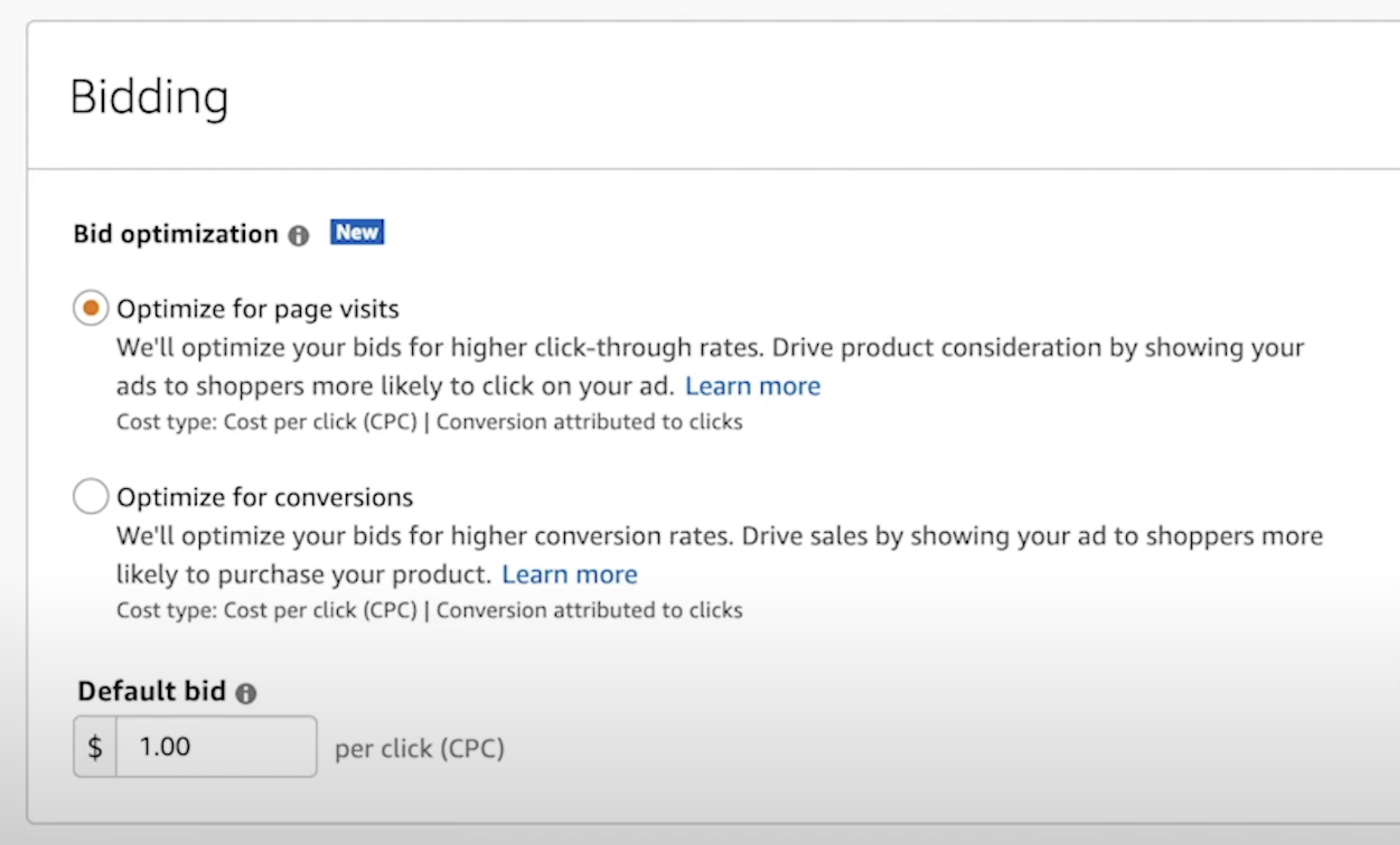
Bidding Strategy Options
Optimize for Page Visits
- Focus on driving traffic to your product pages
- Best for building momentum and generating interest
- Good for new product launches
Optimize for Conversions
- Focus on generating actual sales
- Best for established products with good conversion rates
- Maximizes return on ad spend
Optimize for Reach (vCPM only)
- Maximize brand exposure and awareness
- Best for brand building campaigns
- Focus on impression volume over direct sales
Where Sponsored Display Ads Appear
On Amazon Placements
- Amazon Homepage: Prime real estate for maximum visibility
- Product Detail Pages: Contextually relevant placements
- Shopping Results Pages: Integrated with organic search results
- Customer Review Sections: High-engagement placement areas
- Mobile App: Optimized for mobile shopping experience
Off-Amazon Placements
- Third-Party Websites: Thousands of premium publisher sites
- Mobile Apps: In-app advertising across relevant applications
- Social Platforms: Integrated social media placements
- Streaming Services: Connected TV and video platforms
- Gaming Platforms: Including Twitch and gaming applications
Premium Amazon Properties
- Prime Video: Video streaming platform integrations
- IMDb: Entertainment-focused audience targeting
- Twitch: Gaming and live streaming audiences
- Amazon Music: Audio and music streaming platforms
Retail Awareness Advantage: Amazon automatically pauses your ads if advertised products go out of stock or are no longer the Featured Offer, protecting your ad spend and maintaining campaign efficiency.

Advanced Strategies for 2025
Multi-Funnel Campaign Architecture
Create campaigns targeting different stages of the customer journey:
1. Awareness Stage
- Use broad interest and lifestyle targeting
- Focus on brand introduction and consideration
- Optimize for reach and brand metrics
2. Consideration Stage
- Target in-market audiences and product browsers
- Use contextual targeting on competitor products
- Optimize for page visits and engagement
3. Conversion Stage
- Focus on high-intent audiences and remarketing
- Use custom audiences from AMC data
- Optimize for conversions and sales
Cross-Campaign Synergy
Coordinate Sponsored Display with other ad types for comprehensive coverage:
- Sponsored Products: Capture high-intent search traffic
- Sponsored Brands: Build brand awareness and consideration
- Sponsored Display: Retarget and expand reach off-platform
- Amazon DSP: Advanced programmatic targeting and measurement
When executed strategically, this multi-channel approach can significantly improve overall advertising performance, though results vary by category, budget allocation, and campaign execution.
Amazon DSP: The Next Level
By starting your Amazon advertising experience with Sponsored Products, then building skills with Sponsored Brands and Sponsored Display, you’ve positioned yourself perfectly for the next step: Amazon Demand Side Platform (DSP) advertising.
DSP Advantages Over Sponsored Display
- Programmatic Buying: Access to premium inventory across Amazon’s network
- Advanced Audiences: Leverage Amazon’s full first-party data set
- Cross-Device Targeting: Unified customer view across all touchpoints
- Creative Flexibility: Support for rich media, video, and interactive formats
- Measurement Integration: Advanced analytics through Amazon Marketing Cloud
2025 DSP Enhancements
- Self-Service Access: Easier onboarding for mid-size advertisers
- AI-Powered Optimization: Enhanced machine learning capabilities
- Cross-Platform Integration: Better integration with social and streaming platforms
- Alexa Integration: New placement opportunities on Echo Show devices
Pro Tip: Master Sponsored Display campaigns before advancing to DSP, as the targeting and optimization principles build upon each other.
How Canopy Management Can Help
Amazon has been at the forefront of the eCommerce world for over two decades, providing a platform for millions of businesses to sell their products. With the rise of eCommerce, Amazon has become the go-to destination for shoppers across the world, making it a valuable advertising platform for businesses looking to reach new customers.
Back in the early days of Amazon, Amazon PPC was just one way of launching a product. Now it’s almost impossible to find success without it. Yes, there are some that do, but they’re the exception, not the rule.
The 2025 Challenge: Sponsored Display advertising has become significantly more sophisticated, with AI optimization, custom audiences, cross-platform targeting, and advanced attribution modeling. Professional management is more valuable than ever.
To give yourself a head start, do what many of Amazon’s top sellers have done and reach out to the Amazon experts at Canopy Management.
Canopy Management is a full-service marketing agency for Amazon, Walmart, and TikTok sellers. Our team consists of multi-million dollar, omni-channel entrepreneurs, industry leaders, and award-winning experts.
When you consider the many ways that Canopy Management can help you grow your business, you’ll see why selling on Amazon is much easier “under the Canopy”:
Our Comprehensive Services:
- Strategic Growth Planning
- Listing Copywriting Optimization
- Listing Photography
- Product Videography
- Advanced Display & DSP Management
- AI-Powered Campaign Optimization
- Customer Service
- Demand Side Platform (Amazon DSP)
- Amazon Posts
- Full Service Management
- Amazon Review Aggregation
Specialized Display Advertising Expertise:
- Custom audience development using AMC data
- Cross-platform campaign coordination
- Advanced attribution and measurement
- Creative optimization and A/B testing
- Budget allocation across the full advertising funnel
Our partners achieve an average 84% profit increase through strategic advertising management and optimization.
Ready to Start Growing Your Amazon Brand?
Canopy’s Partners Achieve an Average 84% Profit Increase!
Find out moreFrequently Asked Questions
What’s the difference between Sponsored Display and Sponsored Products?
Sponsored Products:
- Keyword-based targeting
- Appear primarily in search results
- Focus on immediate purchase intent
- Available to all sellers
- Best for driving direct sales
Sponsored Display:
- Behavior and interest-based targeting
- Appear on and off Amazon across the web
- Focus on brand awareness and retargeting
- Requires Amazon Brand Registry
- Best for full-funnel marketing and customer retention
Do I need Amazon Brand Registry to use Sponsored Display?
Yes, Amazon Brand Registry enrollment is mandatory for Sponsored Display advertising. This requirement ensures that only verified brand owners can access these premium advertising features, creating a competitive advantage for registered brands.
How much should I budget for Sponsored Display campaigns?
Budget Allocation Guidelines:
- New to Display: Start with 10-15% of total ad budget
- Established Advertisers: Allocate 20-30% for full-funnel approach
- Daily Budgets: Begin with $20-50 per day per campaign
- Testing Phase: Allow 2-4 weeks for AI optimization before scaling
The average CPC for Sponsored Display typically ranges from $0.80-$1.60 in 2025, though costs vary significantly by category and targeting strategy.
What targeting strategy should I use first?
For New Advertisers:
- Start with Audience Targeting: Use “In-Market” audiences for your product category
- Add Views Remarketing: Target people who viewed your products but didn’t buy
- Expand to Contextual: Target competitor products and categories
- Advanced: Implement Custom Audiences using AMC data
Pro Tip: Run multiple targeting strategies simultaneously but in separate campaigns for clearer performance analysis.
How do I know if my Sponsored Display campaigns are working?
Key Performance Indicators:
- ROAS (Return on Ad Spend): Target 4:1 or higher
- ACoS (Advertising Cost of Sales): Should align with your profit margins
- Click-Through Rate: 0.5%+ is generally good for display
- New-to-Brand Percentage: Higher percentages indicate successful customer acquisition
- View-Through Conversions: Important for measuring brand impact
Attribution Considerations:
- Use 14-day attribution window for direct measurement
- Consider view-through conversions for brand awareness campaigns
- Monitor branded search lift as an indicator of brand building success
Can Sponsored Display help with organic rankings?
Yes, but indirectly. Sponsored Display contributes to organic performance by:
- Increasing overall sales velocity through retargeting and cross-selling
- Building brand awareness that leads to more branded searches
- Improving customer lifetime value through strategic remarketing
- Expanding market reach to customers who might not find you organically
The combination of increased sales and brand recognition creates positive signals for Amazon’s organic ranking algorithm.
Should I use CPC or vCPM campaigns?
Choose CPC when:
- Your primary goal is direct sales and conversions
- You have limited budget and need measurable ROI
- You’re testing new audiences or creative approaches
- You want to optimize for specific conversion actions
Choose vCPM when:
- Your primary goal is brand awareness and reach
- You have high-quality, engaging creative assets
- You’re launching new products or entering new markets
- You have sufficient budget to focus on long-term brand building
Many successful advertisers use both: vCPM for top-of-funnel awareness and CPC for bottom-funnel conversions.
How does Sponsored Display work with my other Amazon ads?
Sponsored Display works synergistically with other Amazon ad types:
With Sponsored Products:
- Use Products for high-intent keyword capture
- Use Display for retargeting non-converters from Products campaigns
With Sponsored Brands:
- Use Brands for branded awareness and consideration
- Use Display to retarget Brand Store visitors who didn’t purchase
Coordinated Strategy Benefits:
- Comprehensive customer journey coverage from awareness to conversion
- More efficient budget allocation across the marketing funnel
- Enhanced performance when campaigns work together strategically
Performance Measurement Strategy: Key Metrics by Campaign Goal:
- Awareness Campaigns: View-through rate, brand search lift, impression share
- Consideration Campaigns: Click-through rate, page views, engagement metrics
- Conversion Campaigns: ROAS, ACoS, new-to-brand percentage
Attribution Analysis:
- 14-day attribution window for direct impact measurement
- Cross-channel attribution using Amazon Marketing Cloud where available
- Incrementality testing to measure true advertising impact beyond baseline performance
What creative assets do I need for Sponsored Display?
Image Requirements:
- Size: 300×250, 728×90, or 160×600 pixels
- Format: JPG or PNG
- Quality: High-resolution, professional product photography
- Content: Clear product focus, minimal text overlay
Video Requirements (Optional but Recommended):
- Duration: 6-30 seconds optimal
- Format: MP4, MOV, or AVI
- Quality: 1080p minimum resolution
- Audio: Optional (videos autoplay muted)
2025 Enhancement: AI-generated images are now available directly in the Ads Console, reducing the need for external creative development.
How long should I run Sponsored Display campaigns before making changes?
Optimization Timeline:
- Week 1-2: Allow for initial data collection, minimal changes
- Week 3-4: Evaluate performance and make initial optimizations
- Month 2+: Implement significant strategy adjustments based on performance data
AI Learning Period: Amazon’s machine learning algorithms typically need 2-3 weeks to optimize effectively, so avoid major changes during this period.
Can I use Sponsored Display if I don’t sell on Amazon?
Yes! In 2025, Sponsored Display is available to all businesses, whether they sell on Amazon or not. This includes:
- Service Businesses: Restaurants, fitness centers, educational programs
- B2B Companies: Professional services, software, consulting
- Local Businesses: Retail stores, automotive, home services
- Digital Products: Apps, subscriptions, online courses
Requirements for non-Amazon businesses:
- Access to Amazon DSP or work with an Amazon Ads partner
- Compliance with Amazon’s advertising policies
- Appropriate landing pages and conversion tracking
This expansion makes Sponsored Display a powerful tool for reaching Amazon’s massive audience regardless of your business model.
